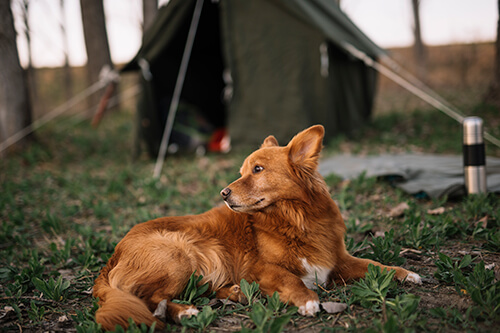Our dogs can be great companions while hiking, camping or traveling – so here are a few tips to review prior to packing your tent.
Before your Trip: Talk to your veterinarian and make sure your dog is healthy and up to date on all required vaccinations, particularly rabies. Ask your vet whether your dog should be vaccinated against Lyme disease, which is a tick-borne disease. Discuss appropriate flea and tick control. Be sure your dog is protected against heartworms, which are transmitted by mosquito bite and have been reported in all 50 states, according to the American Heartworm Society.
Updated ID: Have an appropriate collar or harness with an identification tag, use a cell phone number where you can always be reached (not a home phone number), and include an address as some campgrounds don’t have cell towers. Make sure your dog is micro-chipped. Keep an updated photo of your dog on your phone in case you need to make “lost posters.”

What to Pack:
What to Do with Your Dog While Camping:
Camping with your dog can be a lot of fun for you, your family and friends and, of course, your dog. As long as you follow these basic steps, camping with your dog will be a great experience for you and for her.
Resources:
Dog-friendly campsites: http://petfriendlytravel.com/campgrounds
Hiking with your dog: http://www.rei.com/learn/expert-advice/hiking-dogs.html